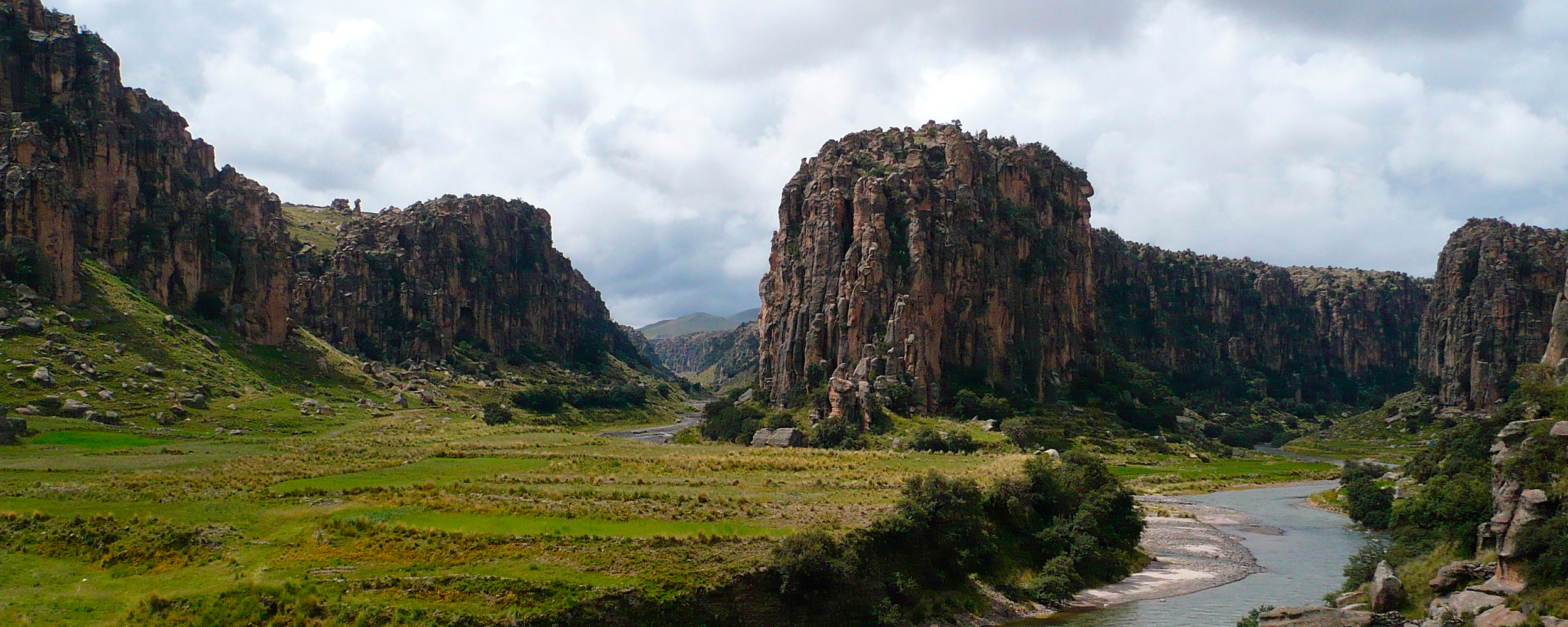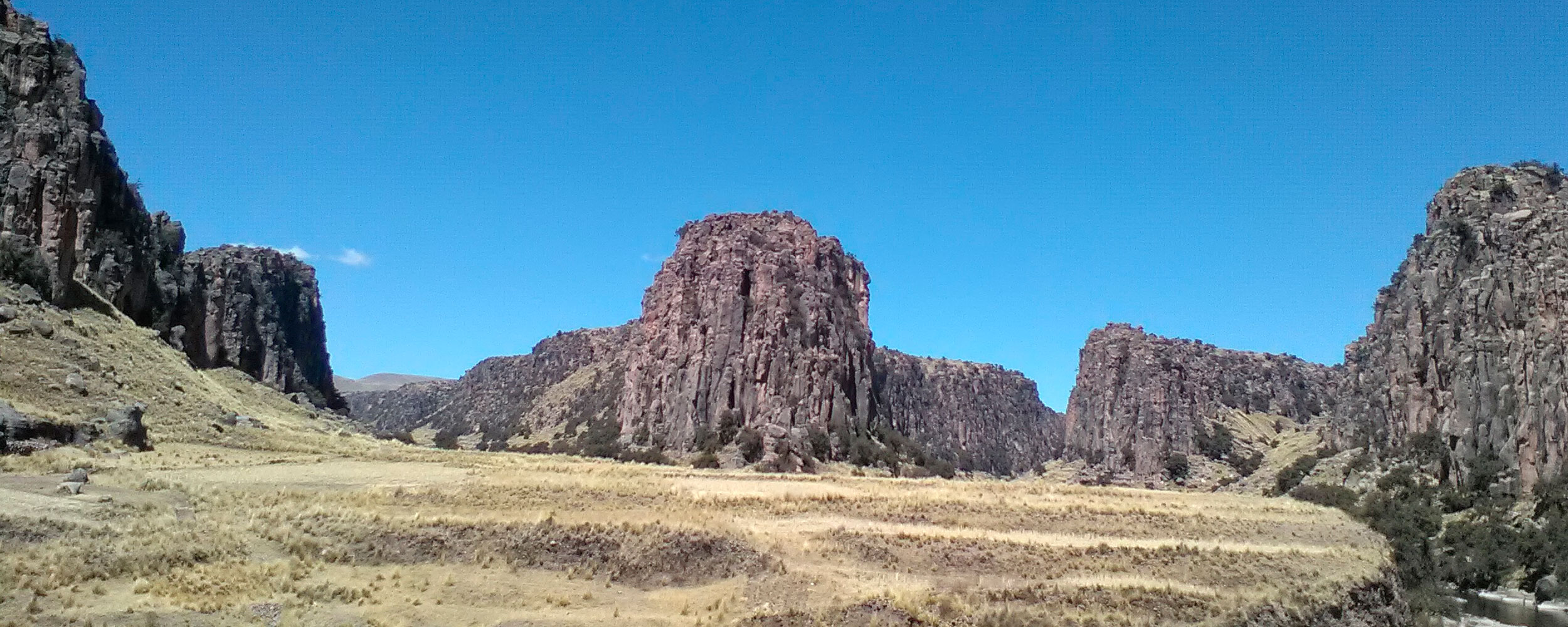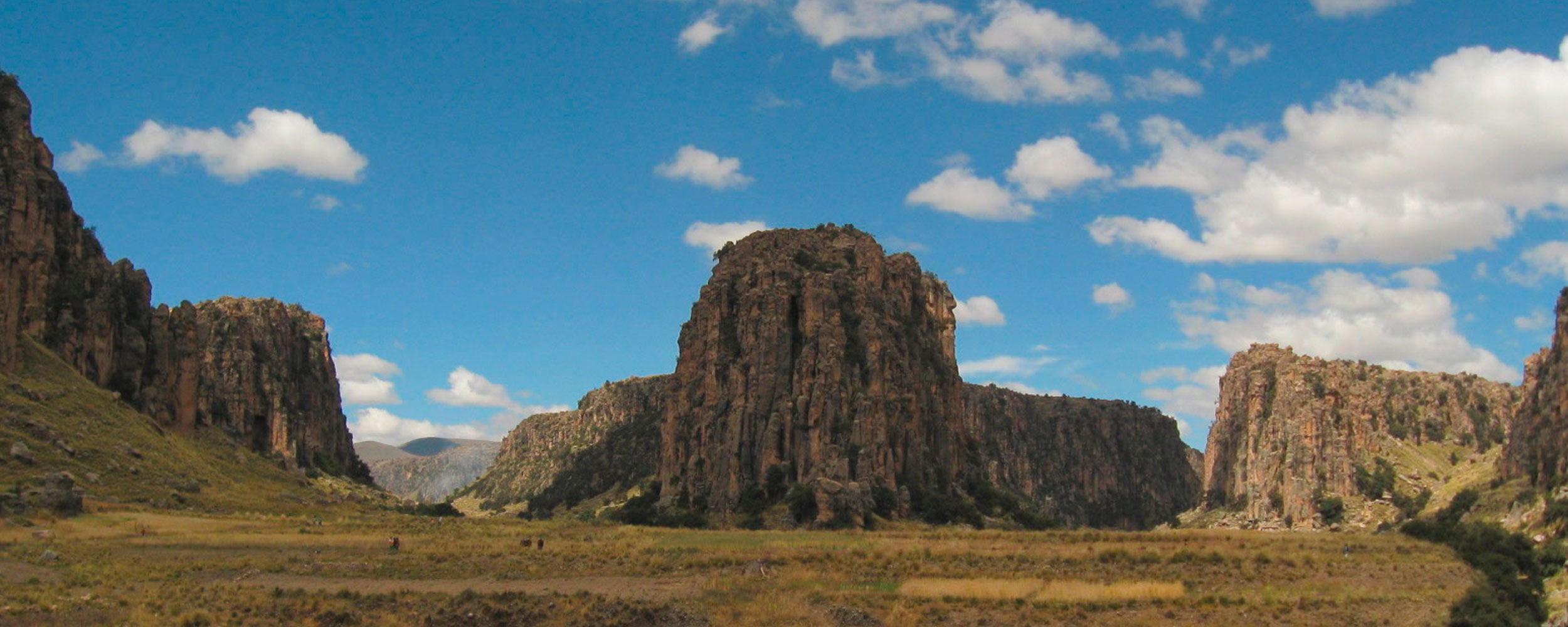241 km south of the city of Cusco, by the route that connects Cusco with the Colca Valley, huge stone walls of more than 80 meters high are erected that hypnotize instantly. The caprices of nature formed with spectacular erosion stone sculptures carved as by the hand of man. Sculptures of enigmatic aspects whose formations project shadows of extraordinary and varied forms that are trapped in the visitor’s imagination.
This majestic place, known as Tres Cañones or Suykutambo Canyon, because it is located in the district of the same name, is made up of mountains whose summits have monumental rock formations of volcanic origin that give the appearance of endless and mysterious stone forests. .
In millions of years, the gentle caresses of the wind, the rain and the forced passage of the rivers formed three perfect alleys with imposing cliffs that rise gallant towards the sky. These stone giants, the Three Canyons, is the point where the Apurímac, Callumani and Cerritambo rivers converge to form the Great Apurímac. This place, located in the districts of Coporaque and Suykutambo of the province of Espinar, between 3500 and almost 5000 m.s., is accompanied by an incredible flora and wild fauna of the place. Queñuales (Polylepis), tholas (Parastrephia lepidophylla), stands of Puya raimondii and high Andean pajonales complement their beauty and landscape value, creating the habitat suitable for vicuñas, vizcachas, tarucas and pumas that move stealthily between the stone giants and the vegetation that he shelters them.
And as if not to believe it, we also find archaeological remains of different cultures that left traces in the area and our history. Between 1000 a.c. and the 1430 d.c., civilizations such as Kaluyo, Tiahuanaco, Huari, Collao and the Inca journeyed and inhabited the valleys, mountains and peaks that surround the Three Canyons.











